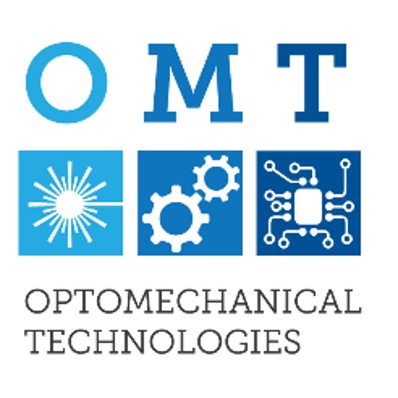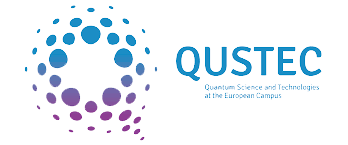Quantum Transduction
Superconducting circuits, in which qubits are encoded in microwave photons, provide the leading platform for quantum computers. These qubits however are bound to the ultracold environment of a dilution refrigerator to prevent thermal noise from destroying the fragile quantum states. This presents a challenge when scaling systems to large numbers of qubits. Modular systems can be built by interconnecting superconducting circuits on multiple chips at millikelvin temperatures, but eventually it will be necessary to convert the quantum information into “flying qubits” that can be transported over longer distances at room temperature. Robust optical photons transmitted through glass fibers represent a particularly attractive option for flying qubits. Our overall objective is to develop a bidirectional transducer capable of quantum-coherently interconverting single microwave photons at gigahertz frequencies and single optical photons at hundreds of terahertz. We are pursuing two alternative approaches: (1) transduction through an intermediate, piezoelectrically actuated mechanical mode, and (2) direct electro-optic modulation (three-wave mixing). With the networking capability enabled by such transducers, the power of quantum information processing could be brought to a whole new class of tasks.
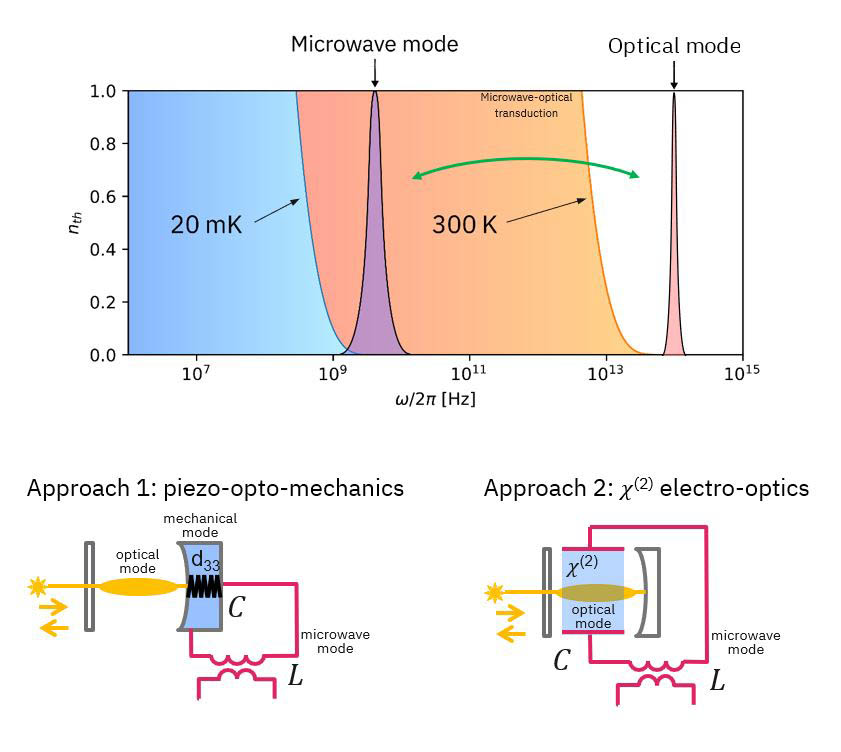
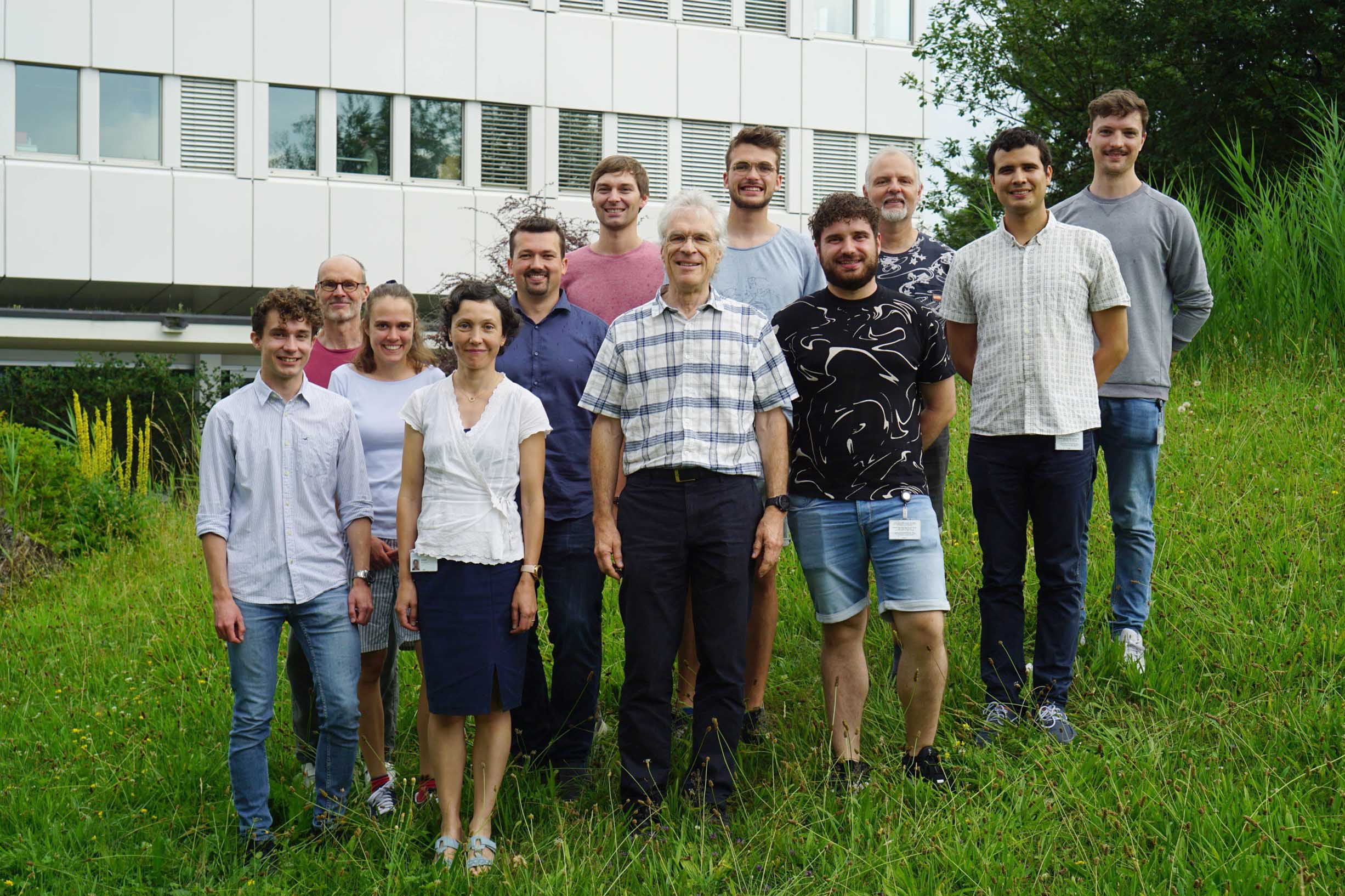
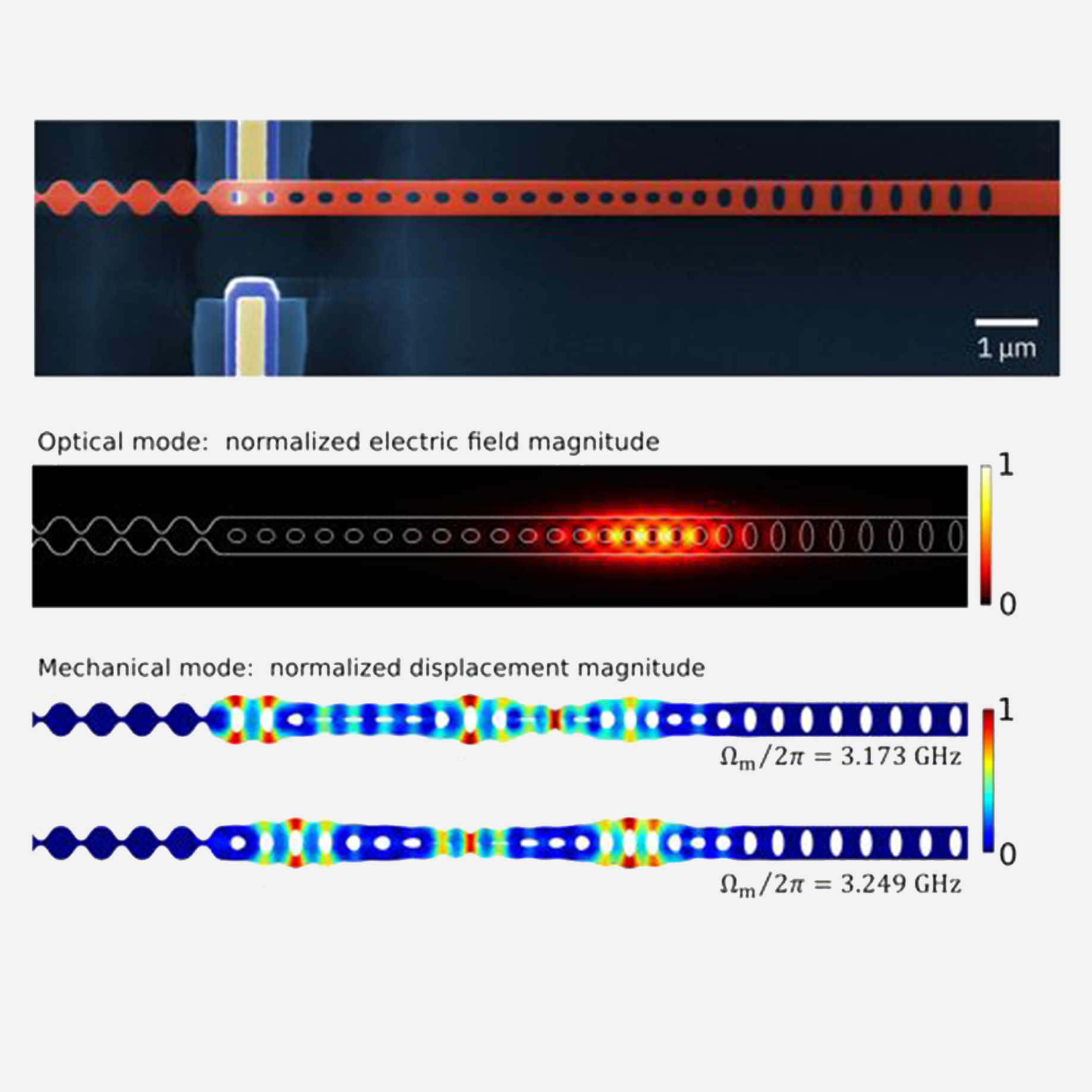
Piezo-opto-mechanics with GaP
One promising avenue to realize quantum transducers exploits micromechanical resonators as an intermediary. Micromechanical resonators have the benefits of long coherence time, small footprint, and large optomechanical and piezoelectrical coupling rates. Our platform consists of an optomechanical crystal cavity made of gallium phosphide (GaP) engineered to feature spatially extended mechanical modes that couple to widely separated optical and microwave modes. The free-standing devices are integrated onto prefabricated superconducting microwave circuits for on-chip coupling to qubits. The mechanical modes are coherently driven via the inverse piezoelectric effect in GaP, and the high optical quality factor of the cavities places them in the resolved-sideband regime.

Frequency matching superconducting circuit
Two challenges of quantum transduction with optomechanical devices are the fixed frequency of the intermediate mechanical mode and the high impedance of the piezoelectric coupling. The mechanical frequency is given by the material properties and the optomechanical crystal design. The exact frequency varies from device to device due to process limitations, but it cannot easily be tuned after fabrication. The high impedance is a consequence of the small spatial extent of the mechanical mode, which also puts constraints on the microwave circuit. Both issues can be addressed using superconducting microwave circuits comprising one or more superconducting quantum interference devices (SQUIDs). SQUID-based resonators can be tuned over several gigahertz with a magnetic field (B) to match either the mechanical resonance frequency or the transition frequency of a qubit, and they possess a high characteristic impedance due to the Josephson inductance.

Electro-optic conversion with BaTiO3
Direct electro-optic coupling via the Pockels effect in a non-centrosymmetric material provides another mechanism for interconversion of microwave and optical signals. Our material of choice is barium titanate (BaTiO3) because of its exceptionally large Pockels coefficient at cryogenic temperatures. One possible device architecture is a “photonic molecule” consisting of two evanescently coupled microring resonators. The resonance frequencies of the rings are tuned into hybridization by applying a DC electric field. The splitting of the resulting symmetric and antisymmetric modes is chosen to match the frequency of a co-integrated microwave cavity. This triply resonant condition greatly enhances the efficiency of transduction. Overall, the direct electro-optic conversion scheme offers the possibility of low added noise and high bandwidth.

Quantum interconnection via entanglement
The protocol envisioned for quantum communication between superconducting nodes involves entanglement generation and verification through detection of heralding photons. Consider, for example, two optomechanical devices (i=1,2), each with a microwave mode Mi coupled to an optical mode Oi. In the first step, microwave-optical entanglement is generated by write pulses on each of the two devices. The optical output signals are then overlapped on a 50:50 beam splitter and detected by two single-photon detectors. A single-photon detection event projects the optical modes into an equal superposition |01〉+ |10〉, since it is not known whether the photon originated from device 1 or 2. Conditioned on this optical detection event, the microwave modes are projected onto their own entangled state |01〉+ |10〉. This is called heralding. To verify the remote microwave entanglement, one can either do joint state tomography of the microwave modes or convert the microwaves back to optical photons using read pulses on the two devices and detecting them on the single-photon detectors. The extent of microwave-optical entanglement can be quantified with a measurement of the correlation function between photons generated during write and read pulses.

Non-linear photonics
Our microwave-optical transducers exploit two non-centrosymmetric materials with exceptional optical properties that are uniquely available at IBM, namely gallium phosphide (GaP) and barium titanate (BaTiO3). GaP possesses an attractive combination of a large refractive index (𝑛 > 3) and a wide electronic bandgap (2.26 eV). BaTiO3 has one of the largest Pockels coefficients of any material (> 900 pm V-1). Combined with our in-house advanced process technology, including direct wafer bonding, these materials offer the possibility of creating a range of integrated devices with strong light confinement, enhanced light-matter interaction, and low two-photon absorption at telecommunication wavelengths. We explore device possibilities beyond transduction, such as frequency comb generation, to better understand the capabilities of these highly nonlinear material systems.
Ask the experts

Paul Seidler
IBM Research scientist

Thomas Karg
Post-doctoral researcher

David Indolese
Post-doctoral researcher
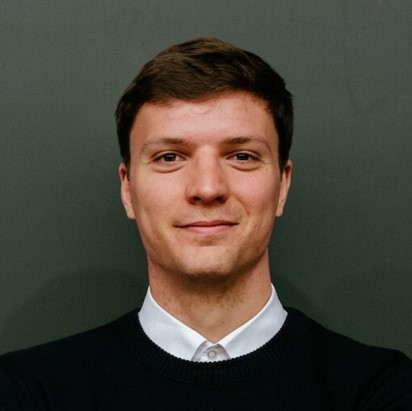
Charles Möhl
PhD student

Alberto Nardi
PhD student
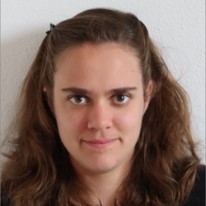
Annina Riedhauser
PhD student

Heinz Schmid
Senior engineer

Marilyne Sousa
Senior engineer
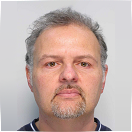
Daniele Caimi
Senior engineer

Javier Hernandez
Master student

Odiel Hooybergs
Master student

Max Glantschnig
Master student
